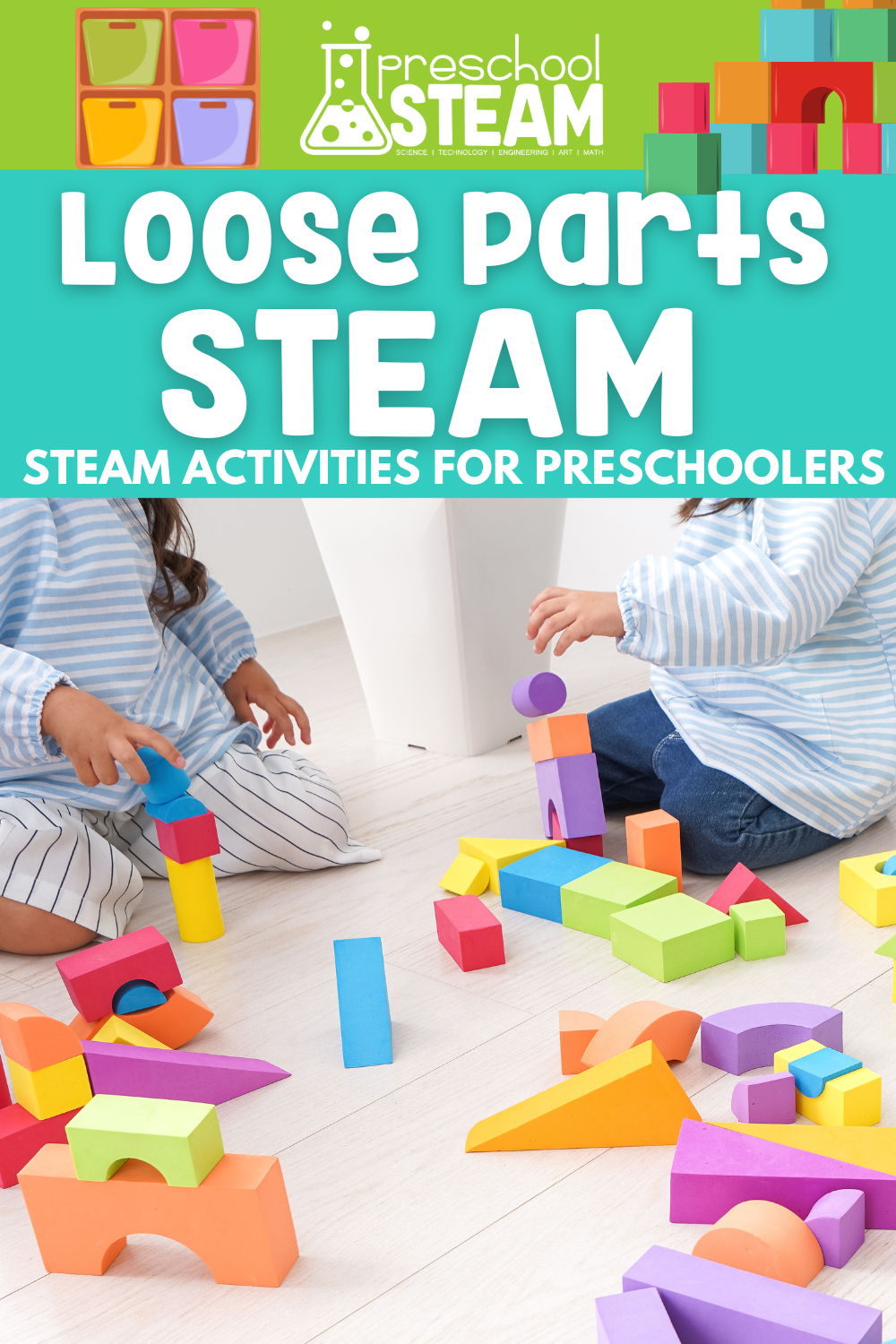Imagine a pile of buttons, corks, and sticks on a classroom table. To the untrained eye, it might seem like clutter. To a preschooler, it’s a world of endless possibilities.
These simple, versatile materials, known as loose parts, are key to fostering creativity, problem-solving, and exploration in early childhood STEAM learning.
Loose parts are the building blocks of open-ended play. They allow children to use their imagination, make decisions, and experiment freely. This blog will explore the power of loose parts and share simple ways to incorporate them into your classroom for fun, play-based STEAM learning.
What Are Loose Parts?
Loose parts are everyday items that can be moved, combined, taken apart, and used in countless ways. They come in many forms, including:
- Natural items: Stones, pinecones, leaves, shells.
- Recycled materials: Bottle caps, cardboard tubes, fabric scraps.
- Everyday objects: Buttons, paper clips, rubber bands.
The beauty of loose parts lies in their versatility. A stick might become a bridge, a wand, or part of a sculpture. The possibilities are endless, and the creativity is all in the hands of the child.
Why Loose Parts Work for STEAM
Loose parts encourage exploration across all areas of STEAM (Science, Technology, Engineering, Art, and Math). Here’s how:
- Critical Thinking: How do I balance these blocks? How can I make this taller?
- Problem-Solving: If it falls, how can I rebuild it differently?
- Creativity: This bottle cap looks like a wheel—what can I build with it?
- Collaboration: Let’s build a structure together. What can we use?
These activities develop key skills like curiosity, experimentation, and teamwork while providing a foundation for future STEAM learning.
Age-Appropriate Loose Parts for All Learners
While loose parts can engage learners of all ages, it’s essential to choose materials that are safe and suitable for your classroom.
- For Younger Learners (Who May Mouth Items): Use larger, non-choking-hazard materials such as:
- Wooden blocks
- Scarves and fabric pieces
- Large spools
- Plastic lids
- Sturdy, oversized foam shapes
- For Older Learners: Offer a variety of smaller, more detailed items, such as:
- Buttons, beads, and bottle caps
- Twigs, small stones, and shells
- Corks and clothespins
Choose materials that fit your learners’ developmental levels, ensuring play remains safe and engaging.
Simple Loose-Part STEAM Activities
Here are a few easy-to-implement activities that inspire creativity and exploration:
- Engineering: Build a tower using corks, sticks, and rubber bands. Test its stability and make improvements.
- Math: Sort and count buttons by size or color. Create patterns or practice basic addition.
- Art: Design a mandala pattern with stones, leaves, and shells. Discuss symmetry and natural patterns.
Science: Explore motion by rolling marbles through a track made from paper towel tubes.
Setting Up a Loose-Part Play Station
A successful loose-part station doesn’t require a big budget—just a little creativity and organization:
- Display materials attractively: Use baskets, trays, or bins to organize loose parts and make them easy to access.
- Rotate materials: Keep children engaged by introducing new items regularly.
Observe and guide: Watch how children interact with the materials and ask open-ended questions to deepen their learning, such as, “What happens if you stack it this way?”
How to Make Clean-Up Easy for Loose Parts Play
Loose parts play can be messy, but with the right strategies, clean-up can be smooth and stress-free:
- Create a Dedicated Space: Use baskets, bins, or trays to organize loose parts. Label them with pictures or words so children know where to return each item.
- Model Clean-Up Behavior: Show children how to return items to their designated spots. For example, “I’m putting the buttons in this basket. Would you like to help?”
- Make Clean-Up Part of the Play: Turn clean-up into a game! Challenge children to sort materials by size, shape, or color as they put them away.
- Use Visual Aids: Display a photo of how the materials should look when organized. This helps children understand expectations and builds independence.
By incorporating clean-up into the learning process, you can teach responsibility while keeping your classroom organized and ready for the next activity.
Loose parts are a simple yet powerful way to spark creativity, curiosity, and problem-solving in young learners. By incorporating them into your classroom, you’re not just providing materials for play—you’re creating opportunities for meaningful STEAM exploration. So gather some buttons, sticks, and corks, and let the possibilities unfold.

Leave a Reply